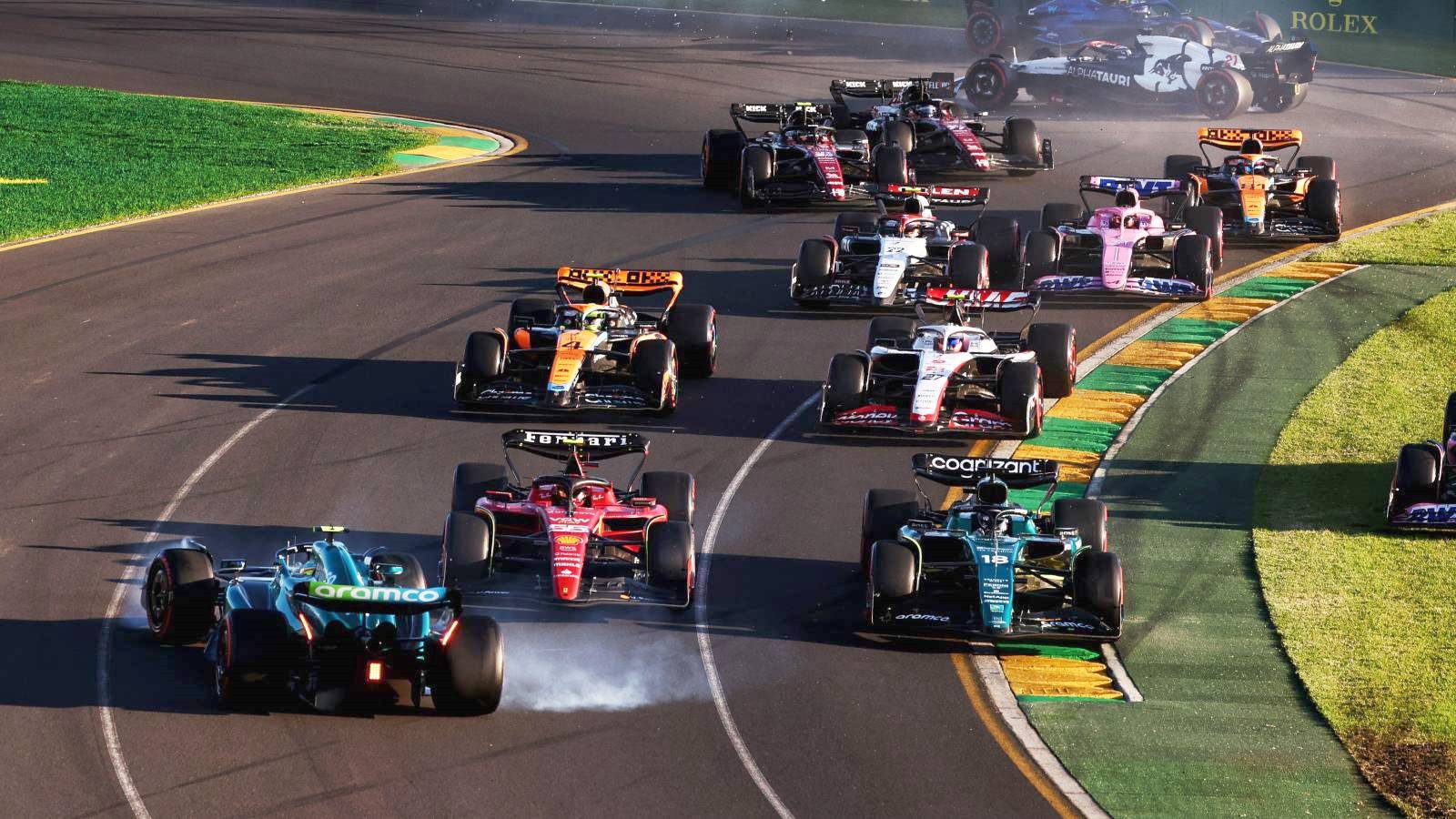F1: GP Organizers blame driver errors for Abert Park Chaos
A cooling late afternoon track surface and greater urgency created by three restarts, rather than changes to the Albert Park track layout, were responsible for the unusually high number of crashes in Sunday’s Australian Grand Prix, say organizers and experts.
One driver also pointed a finger at the setting sun as a problem and called for an earlier start time for the race in the future.
Eight drivers were forced to retire across the 58-lap race. One car spun out on lap one, another crashed into the barriers on the seventh lap and Mercedes’ George Russell pulled over when his car caught fire.
On the 54th lap, Haas’ Kevin Magnussen lost his right rear tire, sending debris onto the track and into the crowd. A standing start was called, turning the race into a three-lap sprint and precipitating further chaos.
“The critical nature of a three lap standing start is extreme. The reward is high for the drivers, the risk is the carnage that we observed.”
Racing engineer Dejan Nicic
Both outgoing Australian Grand Prix boss Andrew Westacott and racing engineer Dejan Nicic said the lap 56 standing start called by race directors played a big role in the crashes.
While drivers typically are cautious at standing starts early in races, Nicic said the prospect of a three-lap sprint at the end meant drivers were ready to take greater risks.
“The critical nature of a three-lap standing start is extreme,” Nicic said. “The reward is high for the drivers, the risk is the carnage that we observed.”
Westacott agreed. “It was about 12 cars left in the race at the end. When that happens, getting out there for two laps – or what could’ve been a one lapper at the end – is gonna mean they’re going hammer and tongs,” he said.
Westacott believed that the high incidence of crashes was a one-off, and not the fault of the track changes.
“I’ve got no doubt the speed of the circuit, particularly around lakeside, has led to more fierce racing, and probably has led to an increase in some of the overtaking, and definitely the spectacle,” he said.
Another Reason for this Race to be Under Lights
Sunday was the first day after daylight saving finished in Victoria and the sun was setting at the time of the standing start.
It was enough of a problem that Red Bull’s Sergio Perez said the race needed to start earlier to avoid blinding the drivers. “The sun is basically in our face – at the restart we couldn’t see anything,” Perez said.
Approaching sunset, the track also cools. Some drivers describe dusk as “happy hour” – the setting sun cools the track to the 25-30 degrees, which improves the traction of the tires.
“The grip improves because if the track surface is too hot – let’s say above 40 degrees – tires can really squirm,” Nicic said.
“[Dusk] is usually a really good time for the grid. But what it can do is promote tire life, and so you get drivers being a little more courageous and overpredict the benefits of what they’re going to achieve.”
Nicic said the sun would have been in the drivers’ eyes on lap 56, immediately after the re-start, as they braked into turns 1 and 2. “It would impact any driver’s ability, regardless of their expertise,” he said.
Wind changes, causing leaf debris on the track, and too much cooling (which can form a grit on the surface) could also have had an impact, he said. —WA Today—
